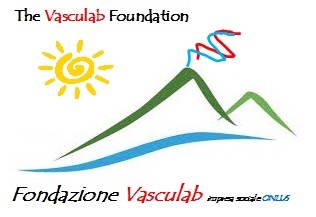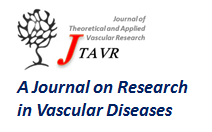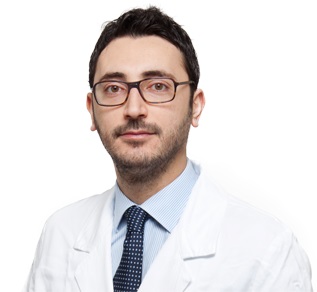DOI: 10.24019/issn.2532-0831
Online ISSN 2532-0831

Journal of Theoretical and Applied Vascular Research
Journal website: http://www.vasculab.eu/jtavr.xml
JTAVR 2023;08(2):33-38

Infrainguinal bypass using varicose veins with external scaffolding

N Montelione1, F Stilo1, V Catanese1, FA Codispoti1, F Spinelli1
accepted: Aug 27, 2023
EPub Ahead of Print: Aug 27, 2023
Published: Aug 31, 2023
Abstract Background: Chronic limb-threatening ischemia (CLTI) is associated with high rates of mortality, amputation, and impaired quality of life. The great saphenous vein (GSV) is the first-choice material for surgical revascularization of the infrapopliteal arteries. It may occur that the autologous material is not of good quality, presenting varicosities and ectasias which can affect bypass patency. The long-term patency rate of these operations is still not clear and few evidences are still present in literature.
The aim of our study is to report the technical feasibility and efficacy of infrainguinal bypasses performed with autologous ectatic or varicose vein and with the use of external vascular supports.
Materials and Methods: From September 2005 to January 2023, infrainguinal venous bypasses with autologous varicose or ectatic vein using an external vascular support were collected in the present study. The indication for surgery was the presence of CLTI with rest pain and/or gangrene.
In case of localized dilatations of a segment of the GSV a partial bypass scaffolding (i.e. 10 to 15 cm) was used. Patients with a long segment of varicose vein underwent a completely covered ex situ vein bypass after a bench devalvulation. Follow-up was performed at 1, 3, 6 and 12 months and every 6 months thereafter, by clinical examination and color Doppler ultrasound.
The outcome measures were technical success, 30-day and long-term primary and primary assisted bypass patency, as well as the limb salvage rate. External support infection rates upon reoperation for surgical wound infection as well as graft aneurysmal dilatation over time were also analyzed.
Results: 63 patients underwent infrainguinal bypass with autologous varicose or ectatic venous material. In 51 patients (80.9%) the GSV was used, in 3 cases (4.8%) the short saphenous vein (SSV) and in 9 cases (14.3%) a composition of both saphenous veins or with one arm vein. Technical success was achieved in all cases and the mean surgical time was 320±80 minutes. No intraoperative mortality was recorded. At 30 days the primary patency and limb salvage rate were 97.8%, due to two early bypass occlusions. No infections of the external vascular support were recorded. During a mean follow-up of 54.6±27.2 months 8 (13.1%) hemodynamic stenoses requiring reoperation and 3 (4.9%) thromboses of the bypass were found. The primary patency rate was 62.8%, assisted primary 76.3%, with a limb salvage rate of 78%.
Conclusion: In our experience, the great saphenous vein, even if ectatic or varicose, has proved to be a valuable conduit for the preparation of a infrainguinal bypasses in CLTI patients, with a satisfactory patency and limb salvage rates. In addition, composite vein graft also using arm vein, could be used in infrainguinal bypass with acceptable results.
Also in the light of these results, a “saphenous sparing" surgical approach during corrective surgery for venous insufficiency of the lower limbs should be recommended, so as not to preclude future surgical treatments for limb salvage.
since Aug 27, 2023
 - DOI: 10.24019/jtavr.171 - Corresponding author: Dr. Nunzio Montelione, EMail n.montelione@policlinicocampus.it
- DOI: 10.24019/jtavr.171 - Corresponding author: Dr. Nunzio Montelione, EMail n.montelione@policlinicocampus.itCitation style: Montelione N, Stilo F, Catanese V, Codispoti FA, Spinelli F. Infrainguinal bypass using varicose veins with external scaffolding. JTAVR 2023;08(2):33-38. https://doi.org/10.24019/jtavr.171
 © 2023 Fondazione Vasculab impresa sociale ONLUS. All rights reserved.
© 2023 Fondazione Vasculab impresa sociale ONLUS. All rights reserved.